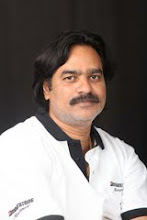Subscribe to:
Post Comments (Atom)
Search This Blog
About Me

- Vijay Bhaskar Reddy Marthala
- Hyderabad, Samaikya Andhra Pradesh, India
- I donot know what i am........u people must tell me what i am .......
Followers
Blog Archive
-
▼
2009
(19)
-
▼
December
(19)
- Royachoty - Veerabhadra
- Daanavulapaadu
- Animela - Sangameswara
- Peddacheppalli
- Sambaturu
- PeddaKomerla
- Devagudi Mines
- Agastheeswara Kona
- Proddatur Mukthi rameswaram
- Tallapaka Annamayya
- Mydukur Sai Temple
- Gandikota
- Gandi Kshetram
- Khajipeta Church
- Proddatur Bollavaram Venkateswara
- Pushpagiri
- Jammalamadugu - Narapura venkateswara
- Mopuru
- Idupula paya
-
▼
December
(19)
Gandikota is 15Km frm Jammalamadugu in Kadapa dt..The fort is 40 feet high...The main door is 20 ft high... The stones used to build the fort weigh nearly a ton each...It is belived elephents were used to open and close the doors...
ReplyDeleteKalyani chalukyas, Cholas, Kakateeyas, Vijayanagar kings and golkonda nawabs ruled golkonda...Hindu king Thimma naidu was the last to rule golkonda...This is said tobe another hampi for it rich achitecture... It had idols made of gold, Silver and bronze..Traveller frm france Tavernier quoted that there were idol more than 10ft high.. It is believed there were 12 temples inside the fort... Raghunatha..Madhavaraya.. Jamia Masjid is the Special attraction here in golkonda..At a time 400 people could prey ( Namaz ) here..the masjid has 3 seperate doors...64 rooms inside and 32 rooms outside the masjid..
ReplyDeleteGandikota is a small village (Lat. 140 47? N. and Long. 780 16?S.) on the Right Bank of the river Pennar, in Jammalamadugu taluk of Kadapa district, Andhra Pradesh. Here lies the famous fort of Gandikota, which acquired its name obviously due to the gorge, formed between the Erramalai range of hills, also known as 'Gandikota hills' and the river Pennar that flows at its foot, reducing its width to a mere 300 ft. Situated amidst beautiful landscape and wild forests, it is endowed with great potentialities of natural strength.
ReplyDeleteThe famous fort of Gandikota, which acquired its name due to the gorge formed between the Erramalai range of hills, is believed to have been built during the later half of the 13th century A.D. It also played a significant role during the Chalukya, Kakatiya, Vijayanagara and Qutub Shahi periods.
ReplyDeleteWithin the fort, there are many interesting places worth seeing. The Ranganatha and Madhavaswamy temples, built during the 15th - 16th centuries, are adorned with sculptures in an architectural style reminiscent of the Vijayanagara period. The Juma Masjid, covering a huge area, stands next to a large granary, used to stock food during the time of a siege. An impressive 'Pigeon Tower' and a palace with plastered decorations are also interesting structures. Gandikota is located 77 km from Kadapa and 219 km from Tirupati.
Gandikota is located 15 km from Jammalamadugu and 77 km from Kadapa by road. Preferable route is Kadapa > Mydukur > Proddatur > Jammalamadugu > Gandikota. If you are travelling by train, then the nearest railway station is Kadapa, Yerraguntla
Gandikota was founded in 1123 A.D. by Kakaraja, a subordinate of Ahavamalla Someswara I, the Western Chalukyan king of Kalyana. The town played a significant role during the Kakatiya, Vijayanagara and Qutub Shahi periods.
ReplyDeleteGandikota is a small village (Lat. 14° 49'5" N and Long. 78° 16'58 E) on the right bank of the river Pennar, 15 Km from Jammalamadugu in Kadapa district, Andhra Pradesh in India. The fort of Gandikota acquired its name due to the 'gorge' (in Telugu it is called 'gandi'), formed between the Erramala range of hills, also known as Gandikota hills and the river Pennar that flows at its foot, reducing its width to a mere 300 ft (see the river image below). Situated amidst beautiful landscape and wild forests, it is endowed with vast natural resources. Surrounded by a deep valley and impassable hills, with massive boulders of red granite and the river Pennar that flows about 300 ft. below on the west and northern sides, its location affords strong natural defence to the occupants of the Fort. The exploits of Pemmasani Nayaks, rulers of Gandikota and commanders in Vijayanagar army to protect the honour of Telugu land are well known[1][2][3][4].
Vemana, the famous Telugu poet, native of Kadapa district and believed to have lived in Gandikota area.
The area within is full of the debris of ages and many ancient structures in varying stages of decay. The fort has a Masjid, a large granary and a temple. The Jamia Masjid has two adjacent minarets. The large granary, with a vaulted roof, is now used as the traveller's bungalow. Within the fort are two ancient temples, dedicated to Madhava and Raghunatha.
The other structures within the fort, include another large granary, a magazine, a graceful 'pigeon tower' with fretted windows and an extensive palace built by bricks with some plastered decorations and some wells. There is an old cannon still lying in the fort. There is also the 'Rayalacheruvu' with its perennial springs irrigating some lime and plantain gardens. It is said that this 'Cheruvu' was connected to a fountain in Jamia Masjid by pipes, traces of which can still be seen.
There were other gardens and springs. There is an undated inscription on a boulder, near the 'Nagajhari' outside the fort, recording the gift of two gardens at the place to the temple. There was also a garden called 'Parebagh' with a waterfall at the foot of the hills, on the bank of the Penneru.